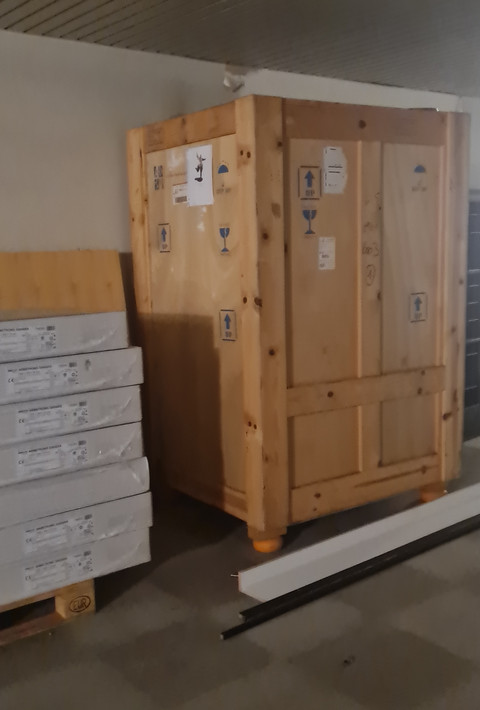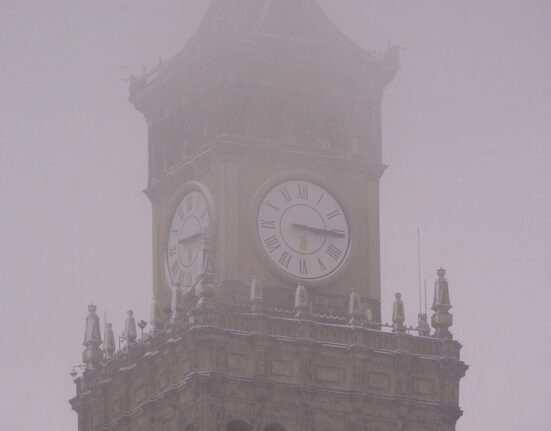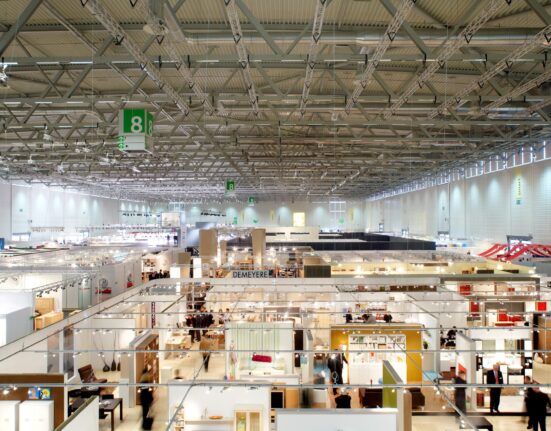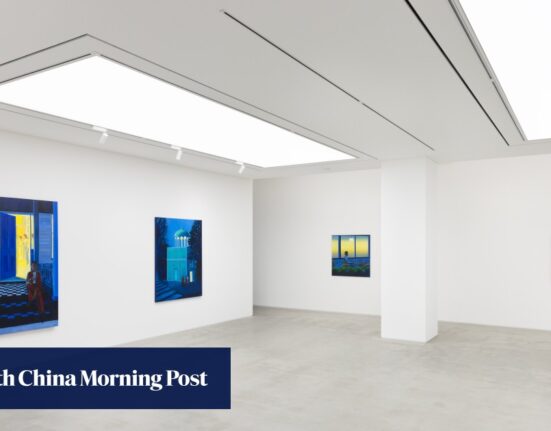Spanish painter turned sculpture Cristóbal Gabarrón has seen his works displayed around the world — and often praised by critics as a reflection of humanity and the development of human values.
Murcia, a university city in southeastern Spain, even dedicated and named a foundation in honour of the 78-year old.
-

Niki de Saint Phalle’s Dawn sculpture – an artwork representing feminist breakthroughs (Photo: Nikolaj Nielsen)
But, back in Brussels at the European Parliament, his sculptures are now hidden away in underground tunnels and corridors that once led to the other EU institutions.
Although the acronyms of the EU institutions are still visible, the tunnels have since been sealed off with plasterboard.
It is here, and for well over four years and counting, that Gabarrón’s Twelve European Muses are stacked up along a wall and covered by black throw blankets, two floors below the Paul-Henri Spaak building in Brussels.
Commissioned in 1993 for the European Parliament, the pieces commemorate the birth of the European Union, each representing a founding member.
One Spanish art critic said they “reflect the life and customs of a people, the past and present of a nation.”
Today, the polychrome steel sculptures are sharing space with discarded office furniture, stacked boxes, and broken cabinet dresser drawers.
La Meuse, which was partially uncovered, is named after a river running through Belgium and represents the country’s fractured sense of identity.
Asked why the works are stored away in a basement corridor, the European Parliament says they are currently looking for another suitable space to exhibit the sculptures.
It is a response they also gave to Gabarron and his son Cris almost four years ago.
In a letter addressed to the president of the European Parliament in March 2020, Cris said his father’s foundation would be willing to pay all costs to have the sculptures removed from the tunnel.
“My father and the Foundation would be both relieved that the present situation is resolved and that the sculptures will be finding a permanent home by being displayed in the parliament in Strasbourg,” wrote Cris, in the letter.
But the European Parliament told EUobserver other factors are now also at play, including security, while noting that the EU institution is an office building and not a museum.
Gabarrón is not alone.
Niki de Saint Phalle
Further along the corridor is a large wooden crate. Inside is the Dawn sculpture by French-American avant-garde artist Niki de Saint Phalle.
Considered one of the most important feminist artists of the 20th century, de Saint Phalle’s work has been sold for seven figures at auction.
Her Dawn sculpture is among a series of so-called Nanas pieces designed to liberate women from the masochism of the 1960s.
“Men’s roles seem to give them a great deal more freedom, and I was resolved that freedom would be mine,” she once wrote.
The curator at Schirn museum in Frankfurt, which recently held a retrospective on her work, said Saint Phalle articulated a plea for women and the feminine.
Among the some 600 works of art currently displayed at the European Parliament buildings in Brussels, Luxembourg and Strasbourg, only 26 percent are from female artists.
Meanwhile, the European Parliament’s Presidential offices, including the protocol rooms where state visitors are received, feature artworks from the European Parliament’s art collection.
They are also exclusively male.
Among them are works by Bozhidar Boyadjie, André Bricka, Pawl Carbonaro, Jean Michel Folon, Piero Guccione, Tapani Mikkonen, David Quinn, Costas Tsaras and Bernd Zimmer.
Getting hung
The selection process appears onerous. Each year they do a pre-selection of artists with an aim to also shorten the gender parity gap.
But they must also take into account EU state representation, which is weighed according to population size. It means Germany will have more artists on display than Malta.
Their annual budget is around €100,000 and this year they pre-selected works from Austria, Bulgaria, Croatia and Finland.
There are other criteria as well. The works must be by established artists and reflect abstract notions like “the spirit and concerns of our historic time”.
Once the pre-selection is made, it then needs approval from the parliament’s questors, a group of five senior MEPs overlooking the financial and administrative interests of their peers.
A final nod of approval is then needed by European Parliament president, Roberta Metsola.
But not everything gets endorsed by questors. In 2022, Monika Beňová, a leftwing populist MEP from Slovakia, took issue with “Family” by Estonian artist Edith Karlson.
Despite her opposition, the artwork was still displayed and is now part of the Art in Democracy exhibition that runs until June next summer.
However, the questors as a whole in 2022 also flat out refused to support a photomontage by German artist Martina Geiger-Gerlach.
Her work entitled “The Parliament Dreams. A Poetic Image of the European Parliament” captures MEPs sitting in the Strasbourg plenary chamber — all with their eyes shut.







